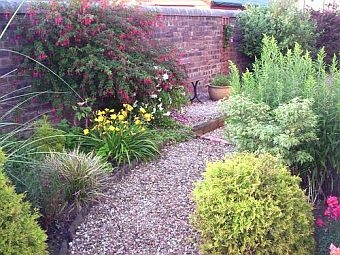 Winter is a great time of year for garden planning. Whether it be a trip to Italy or a new garden bed, now is the time to get ready for the coming garden season. I’ve been reading Toby Hemenway’s permaculture book, Gaia’s Garden, and I have a few new design concepts I’m going to try.
Winter is a great time of year for garden planning. Whether it be a trip to Italy or a new garden bed, now is the time to get ready for the coming garden season. I’ve been reading Toby Hemenway’s permaculture book, Gaia’s Garden, and I have a few new design concepts I’m going to try.
Many gardeners are shrinking the size of their gardens to reduce work and save space. But we still want to grow everything under the sun. How can we do both? Much of our gardens are devoted to pathways. In a typical raised bed, you’re using about 22 square feet of path for your four by 15 foot raised bed. The solution is a keyhole bed.
Keyhole beds are like a raised beds curved in a horseshoe shape. There’s a single path into the center of the bed leading to a small circle. Your plantings wrap around the circle and path making a more attractive bed that uses only 6 square feet of path for that 4 by 15 foot bed. If you orient the bed south-facing and plant tall tomatoes, sunflowers and zinnias in the back, you create a little heat sink where the smaller plants up front will grow even faster.
Another idea is polyculture. Many gardeners plant all the same plant, such as beans or zinnias, in a raised bed. Some will experiment with interplanting fast maturing radishes between slower growing plants like squash. Polyculture goes a step further. By mixing and matching different vegetables, herbs and annual flowers in a bed, you can create a jungle of edibles that work together to grow strong. For example, grow radishes, parsnips, dill, calendula, beans and cabbages together. The fast germinating radishes keep the soil cool for slower germinating parsnips. The dill and calendula attract beneficial insects that attack cabbageworms. The bush beans to supply nitrogen to the cabbages. The combinations are almost endless. You just need to experiment to see what works in your garden.
So get planning your new beds. Next week I’ll be talking about seed starting tips. Until then, I’ll be seeing you in the garden.
Resources:
Gaia’s Garden
A Beginners Guide to Permaculture